Nina Notman looks at steps scientists can take to better protect the content of their labs from floods, fires and other disasters
‘I felt soul crushed when I walked in and saw water flooding everything,’ explains Kristin Hutchins, an associate chemistry professor at Texas Tech University in the US. ‘I was pre-tenure at the time and I [immediately though about] what manuscripts were going to be delayed.’ It was February 2021, and Texas had been hit by a brutal winter storm that froze pipes at several chemistry institutions. A frozen water pipe in the lab above Hutchins’ had burst, flooding her lab. The damaged equipment – an analytical balance and a ball mill for mechanochemistry – were easily replaced. It was the loss of samples that hit hardest.
Samples in open vials had lined a bench the length of Hutchins’ lab as they awaited crystallisation. ‘We had a whole wall of crystallisation vials that were filled with water that had fallen from the ceiling,’ she explains. Everything had to be remade. Compounds that were sensitive to water hydrolysed and turned black, while crystals that appeared unharmed were still unusable since the conditions they grew under couldn’t be reproduced. The lab was back on track after a few months of hard work, including using a pestle and mortar while waiting for the new ball mill to arrive. ‘I was fortunate that I had students who were so motivated and excited about our work,’ Hutchins says.
The ice cores were just in a puddle on the floor
Not all samples are so easily replaceable. In April 2017, a freezer malfunction at the University of Alberta’s then-brand-new Canadian ice core archive facility caused 180m of ice cores collected from the Canadian Arctic to melt. ‘These are very valuable cores that cost a lot of money and resources to drill and scientifically are priceless,’ explains Alison Criscitiello, currently the director of the Canadian Ice Core Lab. Ice cores are long cylinders of ice that contain gas bubbles, chemical isotopes and other clues as to how the climate has changed throughout history. The 12 ice cores in the archive contain more than 80,000 years of atmospheric history, and around 12% of this ice was destroyed by the freezer malfunction. ‘This incident… rules out certain studies that we might have wanted to conduct on the cores, such as reconstructing continuous long-term histories,’ Martin Sharp, who was then the research lead for the archive, said at the time.
The archive had only arrived at the University of Alberta a few months before the incident. It was stored in two room-sized freezers in a building which had not yet been occupied, so no one was around to notice the problem. Additionally, the freezer’s alarm system failed. The issue was eventually discovered when the freezer’s interior became so hot that the building’s fire alarm went off. By then, the cores were ‘just in a puddle on the floor’, says Criscitiello.
The freezer alarm system has since been upgraded. ‘There was only one monitoring and alarm system at the time – we now have four,’ Criscitiello says. But the increase in the ferocity of extreme weather events in recent years has posed a new challenge for the archive: campus-wide power outages. Criscitiello says back-up generators cannot keep such large freezers at –26°C, so she purchased a 72-foot (22m) temporary freezer that is permanently parked on the archive’s driveway. ‘It runs on diesel and freezes down below zero in 40 minutes,’ she says. An on-call team of faculty and staff move the ice into the temporary freezer when the campus loses power. Before the trailer was brought, the campus had never lost power in a storm. But since then, it was happened twice – most recently in May.
Plan ahead
Criscitiello encourages others to ‘think about the absolute worst case catastrophic thing [that could happen to your lab] – and plan for it’. Hutchins now routinely covers all the instruments in her lab with a plastic cover when not in use. Prior to the flood, it was just a microscope they covered, to protect it from dust. The sample vials remain open on the bench, however, as this is the best way to carry out the crystallisations.
It wasn’t until she experienced a flood in her lab that Hutchins began to think about taking more preventative measures. Some university departments provide disaster preparation advice routinely to its scientists, but others do not, although the exception is computer back-ups – this has been standard practice in most places for years.
Robert Emery, better known as ‘Safety Bob’, is vice-president of safety, health, environment and risk management at the University of Texas Health Science Center at Houston, providing disaster preparation advice to all researchers. During lab safety assessments, his team also looks for potential issues from a disaster prevention perspective. ‘We have changed the way we do safety surveillance to look for these vulnerabilities,’ he says. Tweaks he typically recommends include covering expensive equipment when not in use and not sitting it directly on the floor. A couple of inches off the floor make a big difference during a flood, he explains. Emery also checks the lab door to confirm it is posted with emergency phone numbers, so that people can be called in quickly during an out-of-hours incident to take action to minimise damage.
It was a wakeup call
In addition, Emery encourages all the lab leads in his institution to regularly complete a disaster preparedness worksheet. Among the questions it asks are: whether critical equipment is protected from water leaks and electrical surges and outages; if temperature-sensitive equipment is equipped with audible failure alarms; and if backup generators are available to power freezers containing critical samples. Moreover, it suggests splitting critical samples between multiple freezers to reduce the chance of losing everything at once.
As it was for Hutchins and Criscitiello, it was experiencing a disaster first hand that spurred Emery to take action to avoid and minimize future disasters in his organization. In June 2001, the centre experienced extensive flood damage when Tropical Storm Allison dropped about 1m of rain on the city. ‘It was a wakeup call,’ says Emery. In addition to causing $87 million in damage to the buildings and contents, the flood cost the medical school more than $7 million to redevelopment research projects that were affected.
Tips for disaster-proofing lab equipment and materials
- Don’t stick your head in the sand and assume it won’t happen to your lab.
- Think about the worst thing that could happen to your lab and prepare for it.
- Use plastic covers to protect expensive equipment when not in use.
- Lift critical equipment a few centimetres off the floor.
- Make sure lab members’ phone numbers are posted on lab doors so they can be contacted quickly in an emergency.
- Consider splitting critical samples and other materials and storing them in multiple locations (and even in different institutes).
- Investigate what kind of support your university’s emergency response teams can provide.
- After the event, take care to focus on the wellbeing of students and staff.
Fire and water
Fire is another consideration for those looking to disaster-proof their labs. In September 2014 in the UK, the University of Nottingham’s part-completed Carbon Neutral Laboratory for Sustainable Chemistry building burned down in a construction incident before the labs were in use. And in February 2019, a fire that started during cleaning glassware at the University St Andrews’ four-floor biomedical sciences building closed the facility until summer 2022. The growing number and intensity of wildfires is making some university campuses much more vulnerable to fire damage. In April 2021, a wildfire in South Africa’s Table Mountain National Park spread to the University of Cape Town, destroying a library and a plant research unit.
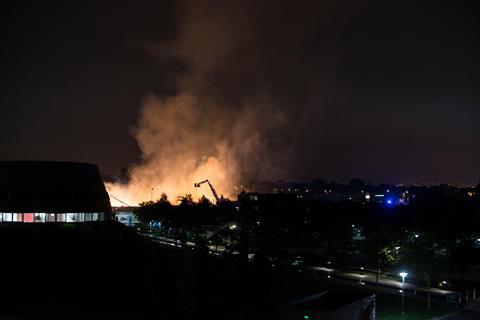
Fire might seem like a tougher catastrophe type for individual labs to prepare for than floods. However, for smaller fires at least, much of the damage to building contents is caused by the water used to extinguish them. Tactics aimed at reducing flood damage are therefore useful here too. The fire damage at St Andrews was limited to the chemistry lab it started in, the lab above it and the two on either side, explains Russell Morris, a chemistry professor who was head of department at the time of the fire. ‘But the fire brigade had to pour in millions of gallons of water and it was that which meant the whole building was shut for three years,’ he adds.
There were quite a few policy changes in terms of lab inspections – these are even more rigorous than they were before
Not everything in the St Andrews’ biomedical sciences building was destroyed, with labs further away from the fire’s origin suffering only minor damage. ‘Some machinery and the instrumentation was collected, tested and brought back into service,’ says Morris. ‘A lot of samples were gone but quite a lot were saved too,’ he adds. Only about a quarter of the space in the biomedical sciences building was used by the school of chemistry at the time of the fire. The remainder was used by the school of biology. The chemists in the building were able to be re-homed within the main chemistry building until their labs were re-opened. ‘Biology had a much bigger problem than we did,’ Morris explains, with some biologists temporarily moving to other universities to carry out lab work while temporary labs in Portakabins were set up.
After the fire, the St Andrews chemistry department beefed up some of its health and safety policies. ‘There were quite a few policy changes in terms of lab inspections – these are even more rigorous than they were before,’ says Morris. The risk assessments completed before starting experimental work can start were also changed to look more holistically at the entire experimental process. ‘We had really quite strong health and safety Coshh forms before the fire but now they concentrate more on cleanup because that can be where unexpected things happen,’ Morris explains. The St Andrews fire started in a base bath – a container filled with a saturated alkaline solution that is regularly used in synthetic chemistry labs for cleaning glassware.
Focusing on the people
In the aftermath of any major incident, it’s critical to communicate regularly with everyone impacted. At St Andrews, this included keeping everyone informed about what had happened, the plan for relocating research teams, and the rebuilding progress. It’s also vital to provide ongoing support to anyone that has been impacted.
At St Andrews those impacted were both the refugees from the biomedical sciences building and those in the main chemistry building who gave up some of their lab space. ‘The main thing I learned [in the aftermath of the fire] was the need to keep the people supported,’ says Morris. To help with this, the department provided various resilience and wellbeing training courses. Morris notes that the need for support seemed to go in waves. At first, there a strong sense of camaraderie as everyone pulled together to relocate teams that had lost their labs to the fire. After a few months, a new wave of support was needed when some barriers to being irritated by having lost lab space got a bit lower and there were a few tensions, Morris says. The Covid-19 pandemic hit about a year into the rebuild, relieving the lab space issues while causing many others. ‘No one ever plans for two disasters to happen all at the same time,’ he laments.
Support from above
Beside the practical steps that individual researchers and department heads can take themselves to disaster-proof their labs, it’s also helpful to be aware of the support on offer from the university’s emergency response teams. These teams have titles such as incident, emergency or crisis management. They also tend to handle business continuity plans – how a university gets back on its feet after a major crisis.
‘We do not get involved in every emergency that occurs on campus,’ explains Anne-Marie McLaughlin, director of emergency management and continuity at New York University in the US. A minor burst pipe or a brief building evacuation, for example, wouldn’t be in their remit. ‘We are activated when there is a significant disruption that has the potential to require the activation of continuity plans or that involves coordinating multiple response departments,’ she says.
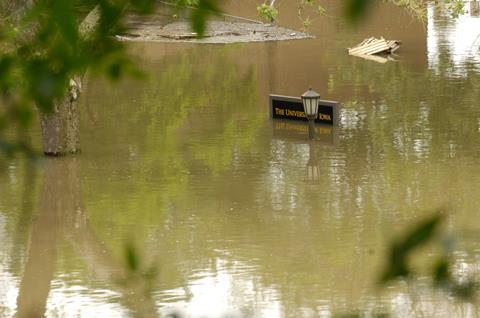
Among the things that emergency teams offer during major incidents are the ability to make rapid decisions, execute pre-prepared plans, keep cool heads and provide resources. ‘Some of what we bring to the table is the ability to speed things up,’ says McLaughlin. ‘Higher education is used to very different timelines: with grant cycles and publication deadlines, and plenty of time to do research and get enough information [before making a decision],’ she adds, ‘but in the moment, we need to respond swiftly before things get worse.’
Pre-prepared emergency response plans mean what needs to be done and when during a major incident has already been decided. This avoids playing the game of ‘whack a mole’ in the heat of the moment, with little time to consider what is the highest priority from a safety or financial impact perspective, explains Don Guckert, a retired director of facilities management from the University of Iowa, US. Flooding is a major concern for this university since it sits on the bank of a river. Its emergency response plans therefore include pre-agreed trigger points for when labs will evacuate based on river levels. Dismantling a research lab might ‘set that research back months or years’, says Guckert. ‘Trying to make a decision in the moment [means there is] too much emotion and too much debate. It has to be planned ahead of time when to shutdown.’ University emergency response teams also have pre-agreed templates to be used for communications – with faculty, staff, students and the media – during major incidents.
Plan for the next disaster, not your last one
Regular drills also help everyone keep cool heads during a major incident. ‘We try to conduct a drill at least quarterly get us ready for any number of things that can happen,’ says Joe Thalheimer, director of emergency management at the University of Central Florida, US. The drills include his team, others involved in emergency management such as the communications department, campus police and security and those involved in student welfare, and – on occasion – the university’s senior leadership team. ‘We have an annual hurricane exercise to kick us off the hurricane season and get people thinking in that mindset of making sure that they’re prepared to do the jobs that they’re tasked with doing during a hurricane,’ says Thalheime. Drills can be practical, like practising evacuating large events, or they can involve the relevant people meeting and talking though what will happen in a given scenario. ‘Our motto here is your body can’t take you where your mind’s never been. If we exercise, people won’t default to panic mode, they’ll default to their training,’ Thalheimer says.
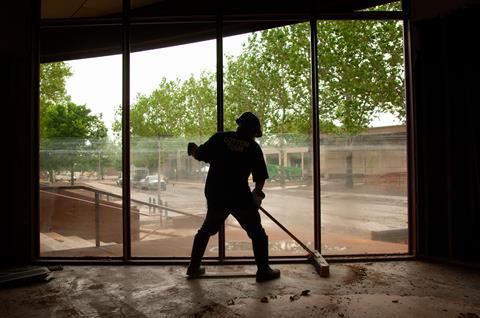
Resources available from emergency response teams to support major incidents can also include equipment. The University of Iowa, for example, has a huge warehouse filled with flood defences, electrical generators, temporary lighting, and the tractors and other equipment needed to install these. This facility was created after the river on campus burst its bank in June 2008 damaging 22 major buildings. The flood caused $790 million in damages and took around nine years for the university to fully rebuild all the damaged facilities, explains Guckert who was in charge of Iowa’s emergency response at the time of the flood. ‘We were able to open up the university the following semester. But a lot of the facilities were in temporary accommodations, and it took years to replace and repair those buildings,’ he says. Prior to the flood, Guckert’s team had assumed that it would be able to purchase and hire everything it needed in the moment. This turned out not to be true. ‘We were in competition for sandbags and other supplies… with farmland, warehouse businesses and things like that,’ he says. ‘They were all vying for the same resources.’
For individual researchers and department heads the process of disaster-proofing the content of labs doesn’t need to be arduous, time consuming, nor expensive. Small tweaks and knowledge of institution-wide support can make a massive difference. But when thinking about what could happen, it pays to think big. This is especially true for disasters caused by extreme weather events. Guckert adds a final piece of advice: after being hit by a disaster ‘organisations and communities prepare for the same [size storm] to hit them again, rather than thinking that the next disaster could be exponentially worse, which is the trend with climate change. Plan for the next disaster, not your last one.’
Nina Notman is a science writer based in Salisbury, UK
UPDATED 25 September 2023 to clarify that the incident at the University of Nottingham was a construction accident and that the labs were not yet in use

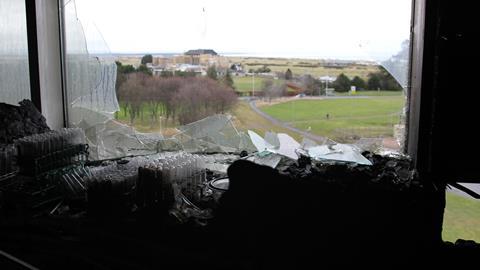





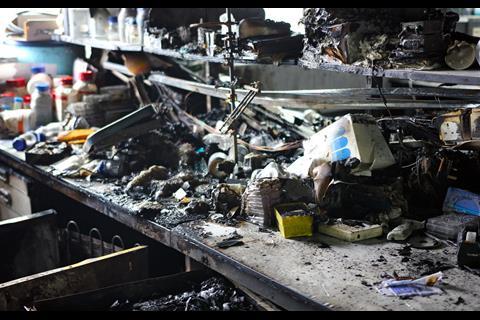
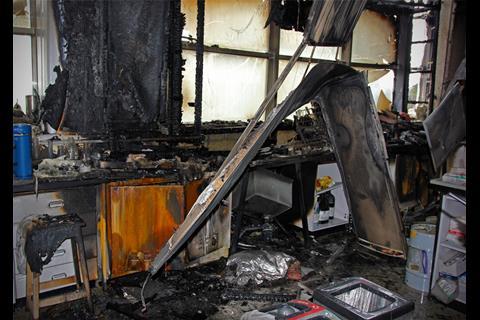




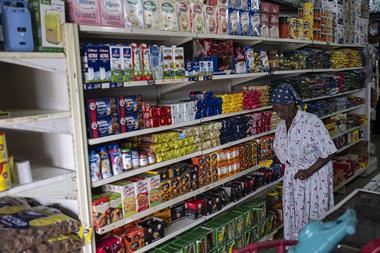
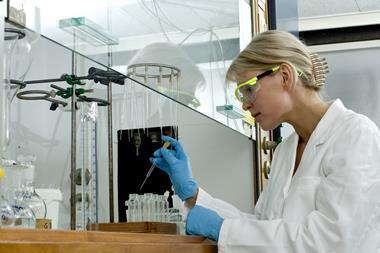










No comments yet